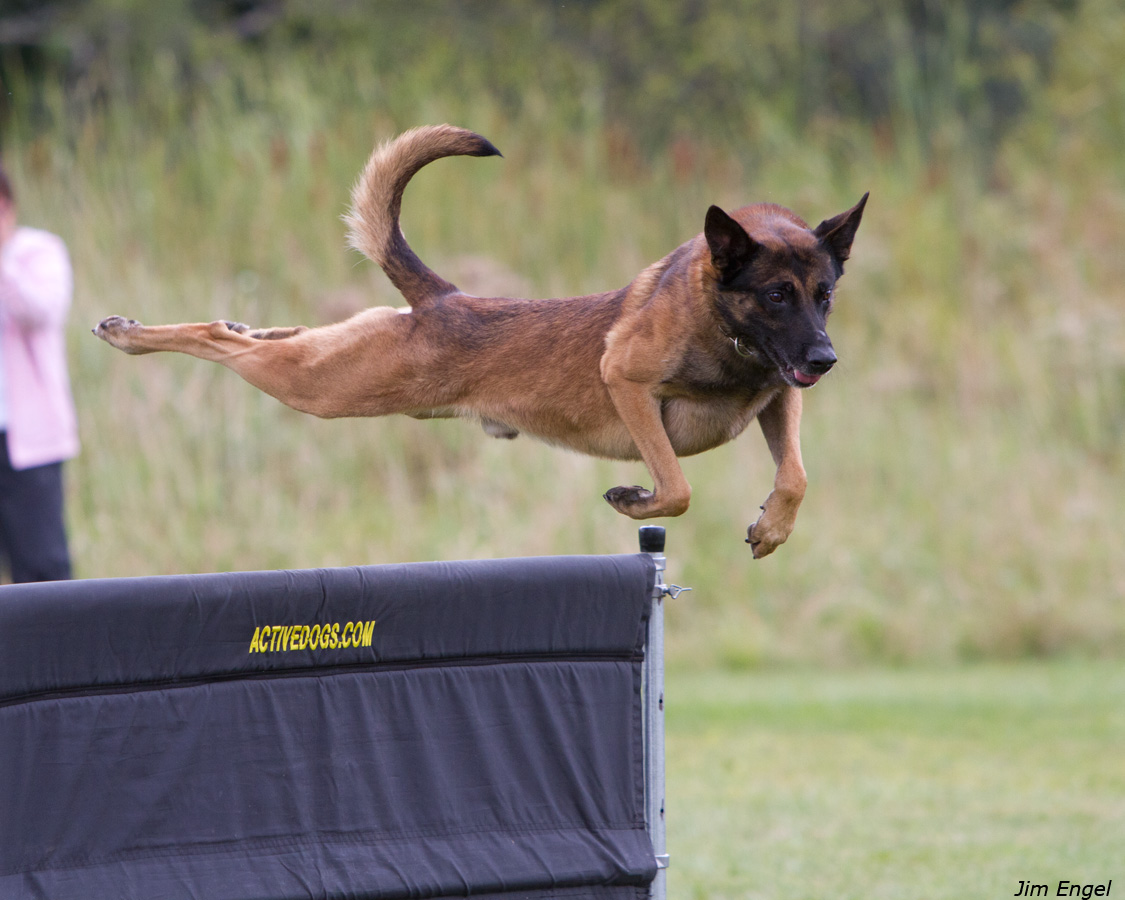Canine Photo Notes
Jim Engel
Good photos of dogs, especially in action are challenging.
What makes a good photo for publication?
First and foremost, the file that came from the camera is the best that that particular photo can ever be, edited or reduced files have less information, often a great deal less information. This greatly reduces what can be done in processing.
Second, the pixal size of the photo is very important; a 400 by 400 pixel jpeg suitable for a web site might be fine, but has problems if it needs processing.
It is often desirable to crop the photo to concentrate on the dog and the man, which does not work well unless there is a lot of information, which means a large file. Furthermore, if you have a large file Photoshop can work magic to bring out detail, but on a small file not so much.
As a general rule, the right photo for your web page is probably not the right format for publication, it has probably been reduced.
In general I prefer raw format to jpeg format because jpeg is a lossy format and because a lot of non-reversible processing has already taken place. Much of this has to do with light balance, which is not too critical in working dog photos, but still it seems preferable to me.
For publication background is extremely important. Take notice of the photos from professional sporting events like football or baseball. Notice that often the background is out of focus, a soft blur that does not distract.
Also, I have a very good scanner and the experience to get the best out of color slides, negatives or prints for photos from the pre internet era.
This is one of my favorite photos:

For the Photographer
Those of us taking our own action photos have a big challenge; we are compared with the sports photographers, who often have equipment that costs the price of a pretty nice automobile hanging around their neck when they work. There is no way around it, good equipment is expensive. But with a modern DSLR such as those from Nikon or Cannon and a reasonably good long or telephoto lens, we can often get good or even great photos.
Everything is a compromise, you only get so much light through your lens, and fast lenses get expensive in a hurry. It is a trade-off between aperture, shutter speed and ISO equivalent sensitivity.
My first suggestion is to kick up your ISO equivalent speed to 800 or even higher, as it gives you a lot to work with. This depends on your camera of course, but my experience is that there is very little penalty today, high ISO performance has increased greatly in the past few years, and the action photographer should be the first to take advantage of this.
Second, you need to be at 1/1200 to 1/1600 second to get reliably sharp images.
Fast lenses provide more light to work with, which means you can use higher shutter speeds and lower ISO numbers. But they also provide more light for the fast focusing mechanism. Every situation is different, but using wide aperture, such as f2.8, can be very effective.
The above shot used these settings:Camera Model: Canon EOS 7D
Lens: EF70-200mm f/2.8L IS USM
Focal Length: 200mm
Focus Distance: 14.5m
Aperture: f/4.0
Exposure Time: 0.0006 s (1/1600)
ISO equiv: 800
Notice that I was pretty close for this shot, which was at a local trial. Often you cannot get that close, especially at the larger events. If you have freedom to select your position, look for non-cluttered backgrounds. Often slightly cloudy days are best, the full sun casts hard shadows. Sometimes at the smaller trials you can get permission to stand behind the judge or other favored locations.